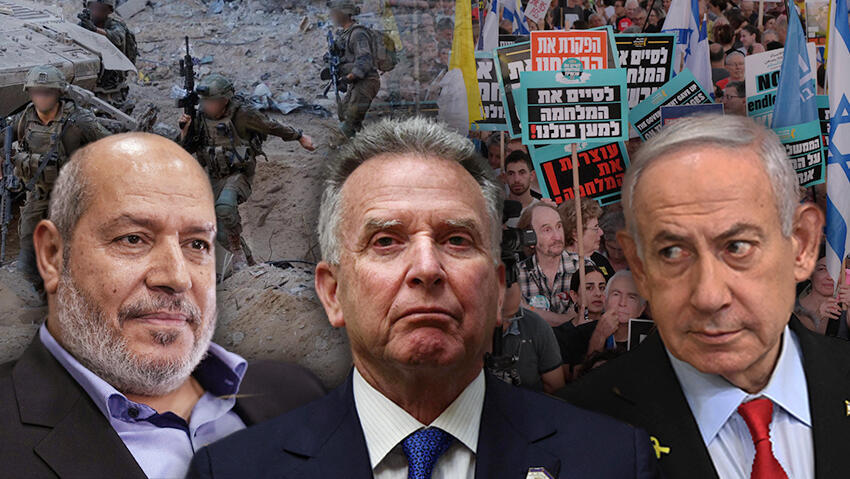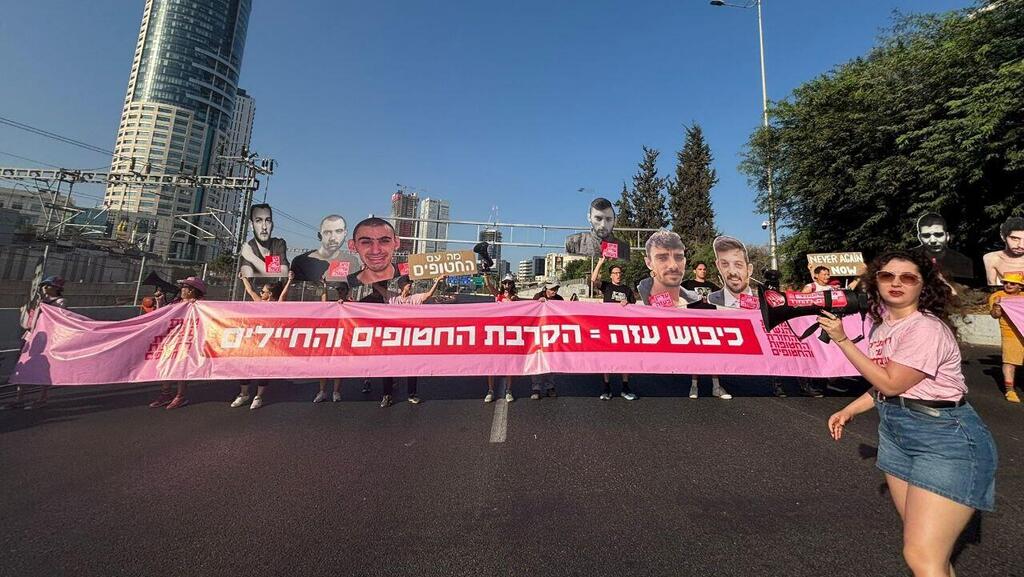With Hamas’s response in hand, the focus now shifts to Israel on Tuesday. An Arab diplomatic source described the plan as “Witkoff Plus,” suggesting that Israeli agreement could lead to talks in Doha or Cairo, potentially involving Witkoff himself to finalize the deal.
2 View gallery


Hamas official Khalil al-Hayya, Steve Witkoff, Prime Minister Benjamin Netanyahu
(Photo: IDF Spokesperson’s Unit, Yair Sagi, Yuval Chen, REUTERS/Evelyn Hockstein, Khalil Hamra/AP)
Three and a half weeks ago, Hamas demanded the release of 200 terrorists serving life sentences in Israeli prisons, while Israel offered 125. The terror group has now lowered its request to 140-150, leaving a gap of just 25. Hamas also softened its stance on the buffer zone, agreeing to a perimeter of 800-1,000 meters (2,625-3,281 feet) compared to Israel’s 1,000-1,200 meters (3,281-3,937 feet).
Egyptian sources told Saudi outlet Al-Arabiya that “the security situation doesn’t allow releasing all living hostages at once,” adding that Israel must respond by week’s end. Mediators have invited Israel’s negotiation team, and a meeting with Israeli security officials is imminent, though Hamas will not participate in future Gaza security roles.
“I, like you, hear the media reports, and from them you can sense one thing—Hamas is under immense pressure,” he said, outlining five core demands: disarming Hamas, returning all hostages—alive or deceased, demilitarizing Gaza, maintaining Israeli security control including the buffer zone and establishing a non-Hamas, non-Palestinian Authority civilian administration.
However, the new proposal, approved alongside the Gaza City takeover plan, delays post-war arrangements for 60 days of negotiation, sidestepping cabinet-approved demands.
A source familiar with the talks told CNN that Hamas insists on written U.S. guarantees for a ceasefire beyond 60 days, demanding President Donald Trump ensure Israel does not resume fighting—though it’s unclear what assurances the U.S. will offer or who will provide them.
The proposal’s other terms are familiar: Hamas will release half the living hostages and 18 deceased in exchange for 60 days of ceasefire, with 10 living hostages freed initially, followed by negotiations to end the war—mirroring the original deal. Hamas’s response is under expert review for loopholes, and U.S. approval seems likely, shifting pressure onto Israel to agree.





